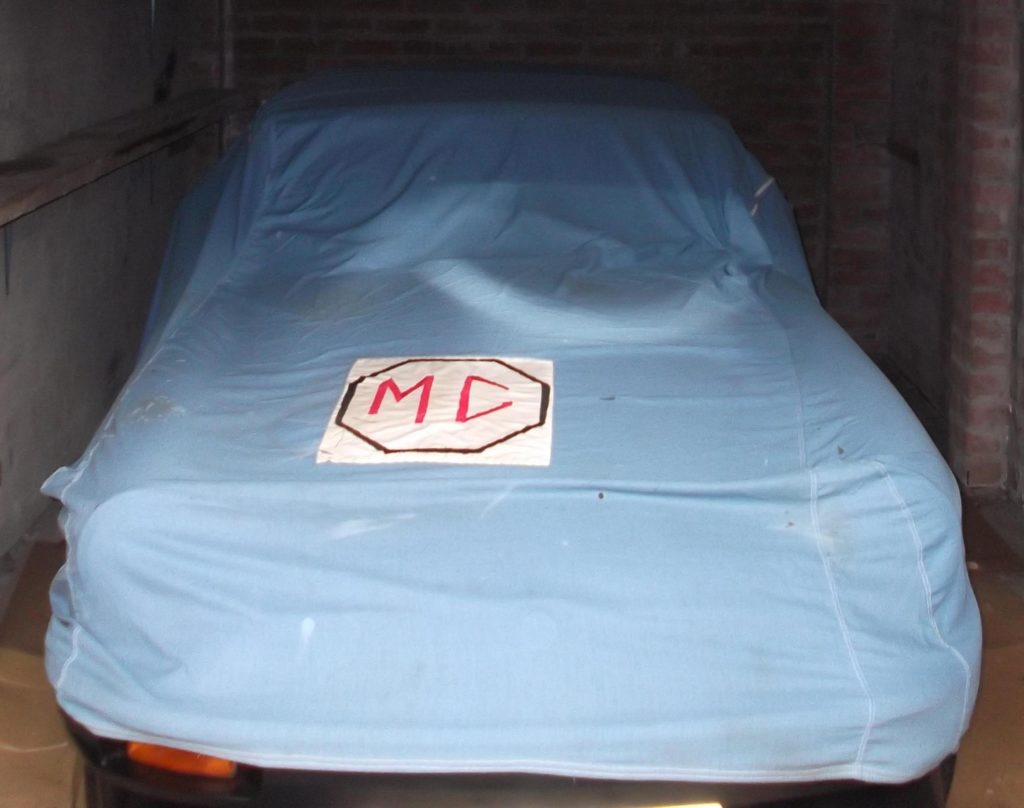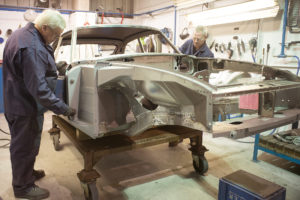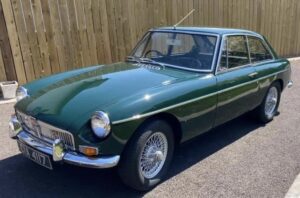Preparing Your Car for Winter Storage
5 min read
Share this
With the summer sun sinking ever lower in the sky, leaves fluttering to the ground, condensation on your windows and the nights closing in, it’s fast approaching that time of the year again when many of us will be laying our Classics up for the winter months.
Some may drive their car into it’s resting place and there it will sit until next spring, with bated breath and fingers crossed it’s owner will turn the key hoping it starts. Some cars may have a full service before being laid up and others may be placed in Carcoons, we all have our own way of dealing with the long winter ahead but for our new members and those that are not too sure I have put together a few suggestions which I hope you find useful.
Firstly the environment in which the car is left and the precautions you take can have a major effect on how the car emerges next spring. If it is kept in a centrally heated garage or Carcoon then there is little to worry about, but for those less fortunate and their car has to be stored in a barn, carport or maybe a very cold garage then a few simple precautions will help.
Lay a sheet of plastic on the floor slightly longer and wider than the car (available from most builder’s suppliers) then lay thick cardboard over the plastic covering at least the area of the car, the plastic will stop rising damp and the cardboard has the effect of keeping the underside of your car dry, which also helps prevent the clutch plate and flywheel seizing, with the storage area now ready, what about the car?
I try to pick a good dry and slightly windy day, the car is washed including the underneath but not allowing too much water inside the doors and other entrapment areas – then I take the car for its last run getting it fully dried. Upon its return it gets treated to an oil and filter change and the car is allowed to idle for a period thus coating all internal engine parts with the new oil. If the oil change is left to the spring the impurities held in suspension in the oil will settle to the bottom of the sump and this cannot be easily removed.
All grease nipples, suspension parts, etc., are treated to the grease gun, plugs and points are checked, cleaned or replaced, antifreeze content is checked and either the washer bottle is emptied or a high concentrate of screen wash is added and drawn through the tubes to the spray jets, this will help prevent freezing.
Chrome wire wheels, springs etc. get a squirt of WD40 or similar product and any areas of the car that have tell tale signs of rust including doubled skin areas are treated on the inside to Waxoyl, spray grease or heavy oil and this will slow down the rusting process. Check the carpets, floor and boot for signs of damp and dry as necessary, a damp carpet will be rotten next spring and the musty smell will be hard to get rid of, erect the hood if it’s a convertible and at this stage the car is ready for a good coat of polish including the chrome work.
If you wish to prevent flat spots on the tyres and want to take the weight off the springs the car could be jacked up and placed on suitable axle stands, leave the handbrake in the off position as this will help prevent the shoes seizing against the drums, when doing this always make sure the wheels are chocked or the vehicle is left in gear if sitting on the ground.
Disconnect the earth lead from the battery and check all cells for water, applying Vaseline to the battery terminals and connectors will help prevent corrosion. An unused battery slowly discharges so if you have a battery conditioner then this unit could be left connected for weeks at a time thus keeping the battery fully charged. Some of these battery conditioners can be fairly expensive to buy but I use a Draper unit part number BM1 (H) and while it may be more basic than others it seems to do the job and only costs about £16.00.
Finally, leave your windows slightly down, fully cover the car with a suitable dust sheet or if there is any chance of water dripping on it then use a waterproof and breathable car cover, hopefully at this point you can walk away knowing that you have taken all reasonable precautions for the coming winter months.
Some people like to start their classics a few times during the winter but I have found that this leads to a build up of condensation/acid into the exhaust system and if it is mild steel it will shorten the life dramatically.
Noel, MG Owners’ Club Northern Ireland
In the spring when you want your pride and joy back on the road, carefully lower the car back onto its wheels, check the tyre pressures, reconnect the battery terminal, turn the car over on the starter without the choke or without the ignition on if possible until oil pressure is showing on the gauge, this helps prevent considerable engine wear as the car will be starting with all the oil galleries full, listen for the clicking of the SU petrol pump and if not a gentle tap with a mallet usually sends the pump into life. Hopefully the car should fire up and it’s once again ready to enjoy.
I have purposely omitted to mention fuel as I thought it warranted a few paragraphs on its own. Unleaded petrol does not have the same storage life as the original leaded fuel that our cars were used to, and as unleaded petrol starts to break down its smell changes to that of something resembling rotten eggs. There are three lines of thought re fuel in the car’s tank during the winter months or longer.
Fill the car’s tank to the neck thus minimizing the area of the fuel in contact with air, this will slow the rate at which the petrol goes off. Leave the tank as low as possible with fuel and before the car is recommissioned fill the tank up with fresh fuel and any quantity of stale petrol should be well diluted.
Add a fuel stabilizer to the petrol in your tank and this prevents the petrol from going off for up to a year – it also has the benefit of breaking down and preventing gum deposits in the fuel lines and carbs. Probably the best additive is made for marine use and is available from these outlets, if this is used the car has to be run for a short time thus allowing the treated fuel into the supply pipework and carbs.
The environment/location in which the vehicle is kept may dictate which method is used as at all times you have to be aware of the risks of fire when petrol is stored in a car’s tank.
Noel, MG Owners’ Club Northern Ireland







